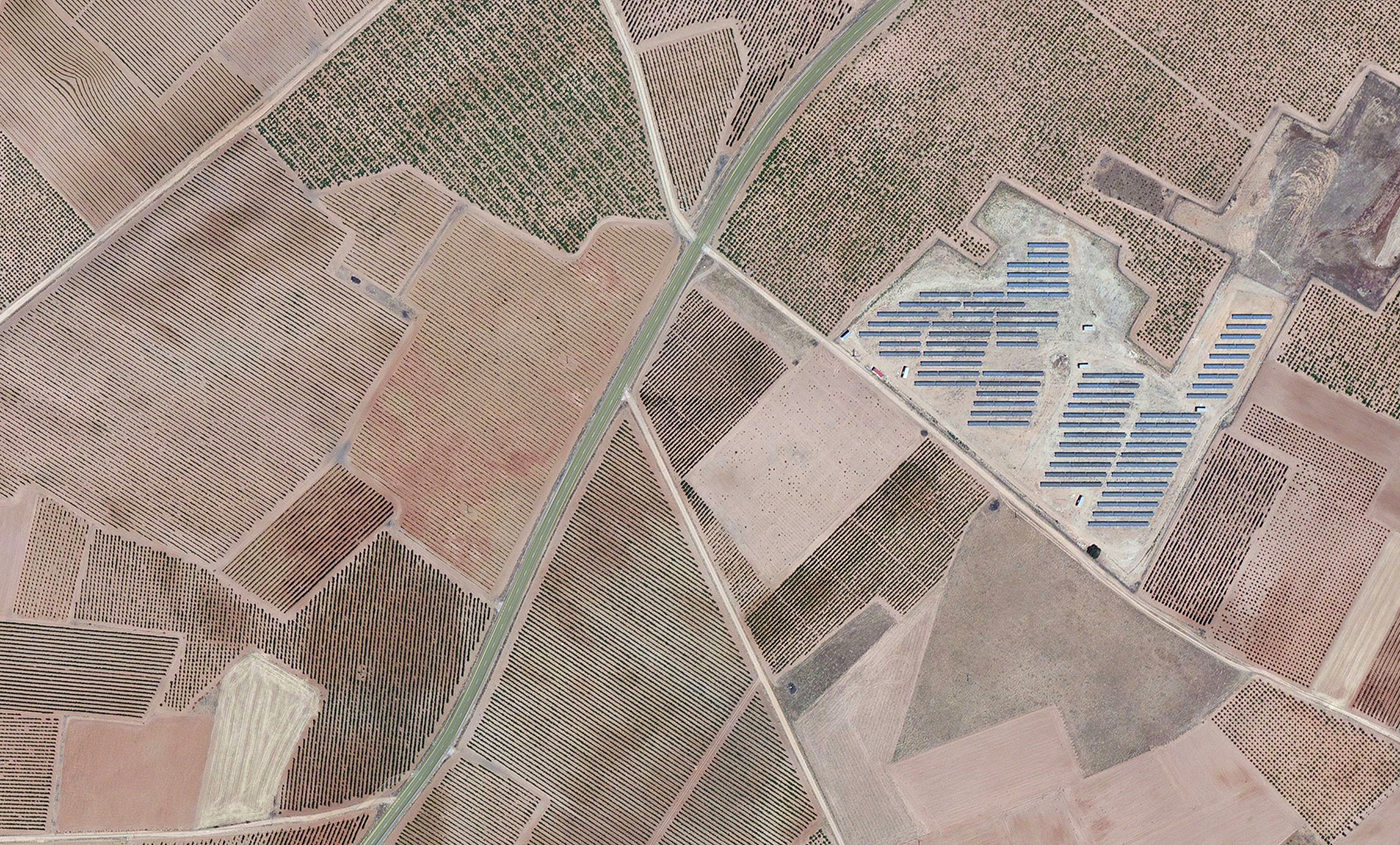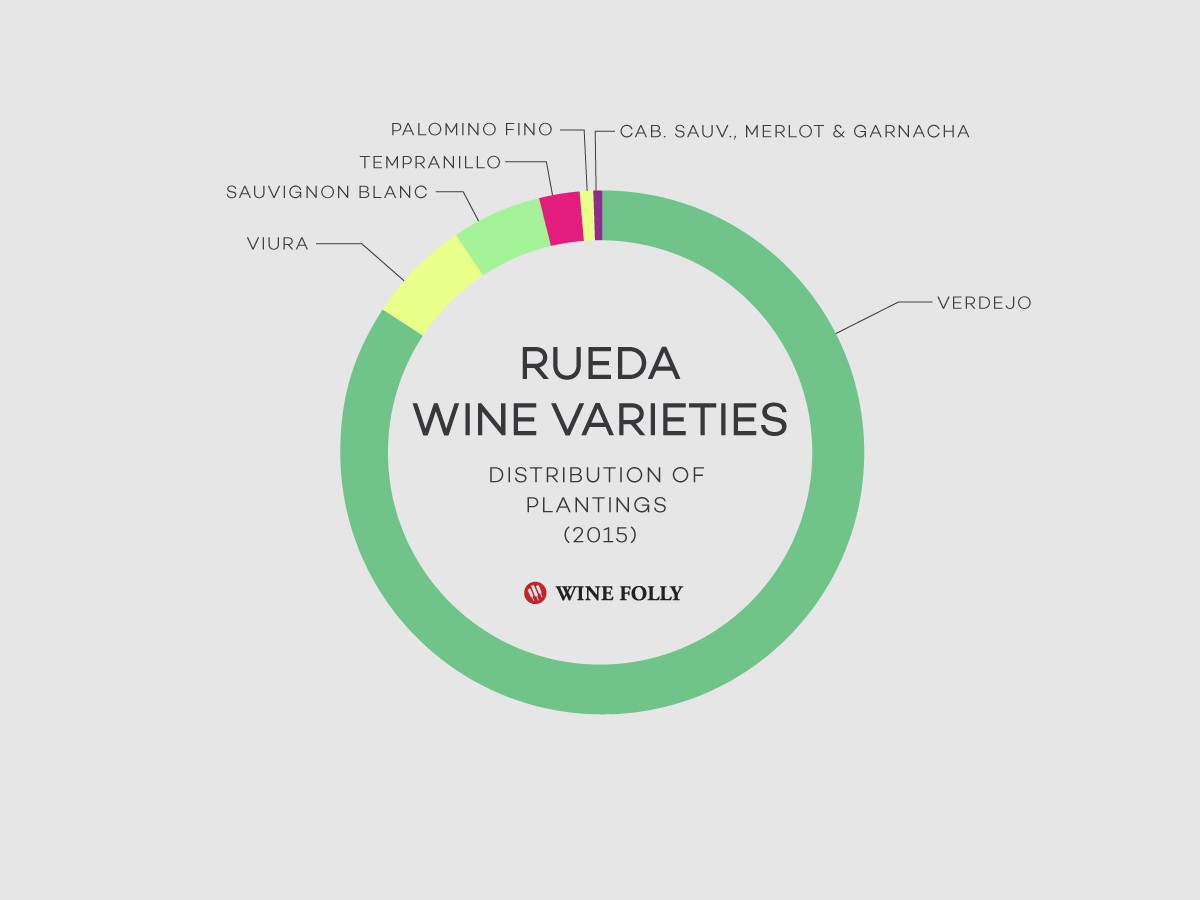
Rueda: nothing but vineyards as far as the eye can see (with the occasional solar power station). The route between Rueda and Serrada taken from Bing Maps
No one goes to Rueda.
Your internationally travelled friends will never come back with stories of Rueda. It’s a place where few outsiders will venture, even if the region produces some of the most amazing wines, along with a plethora of exotic agricultural products (look up Piñones Reales–Spanish pine nuts and raw sheep’s milk cheese, Queso Zamorano). The region is patchwork of vineyards on the flat high plains south of Valladolid, that’s home to a rare indigenous white grape called Verdejo (“vurr-day-ho”).
Your first foray into Verdejo may only be a modest $10, but don’t let the price fool you into thinking that these wines aren’t special! Verdejo is a very old grape that was supposedly brought into the region over 1000 years ago before the Moorish rule of Iberia. The grape lost favor during the early 1900s when oxidative Sherry-like white wines became en vogue. Fortunately, Verdejo was saved in the 1970s, helped in part by the prodigious Rioja producer, Marques de Riscal, who saw Verdejo as the Spanish choice for a growing demand for refreshing white wines like Chardonnay and Sauvignon Blanc.

Many of Rueda’s vines are farmed as bush vines. Notice the pine nut trees in the background. Vineyards at Garciarevalo in Matapozuelos
Verdejo has mutated over hundreds of years to thrive in Rueda’s stark climate–it’s dry and either hot-as-hell or freezing cold! There are many sandy vineyards here, which have resisted phylloxera and have 100+ year-old Verdejo vines. If you’re a wine geek, this is exciting news! It means Verdejo wines can show profound richness when sourced these older vineyards.
Rueda Regional Production
The most planted variety in Rueda is Verdejo. Wines labeled Rueda Verdejo must have at least 85% Verdejo, and many are 100% Verdejo (and usually listed as such on the back label). Wines labeled Rueda may contain up to 50% Sauvignon Blanc and other white grapes – a style that’s gaining popularity due to the familiarity of this grape. There is also a very small amount of red grapes planted in Rueda, labeled with a similiar classification method as Rioja (e.g. Crianza, Reserva, Gran Reserva). These wines have the potential to reach the same intensity of Toro (just down river), but this is not the specialty of Rueda!
Aging Rueda Wines
Well-made Rueda wines will develop more toasted almond and orange peel notes as they age. While most of us do not age Rueda wines longer than a day, you might try setting down a few bottles for 5–8 years to see how the wine evolves. Remember to select Verdejo wines with high acidity and without too much oxidation for aging experiments!
Rueda Dirt
Rueda is part of the Duero River Basin which was created during the Cenozoic era (from 1–65 million years ago). The soils here are very deep and well-drained, primarily of sandy-clay or a clay blend. Because it is so dry here, farmers used to dig wells around the grapes every spring to help collect rainwater. Today, however, drip irrigation has reduced the need for manual labor.
You’ll note the vineyards with more clay-based soils (which are often topped with a layer of stones) produce richer styles of Verdejo with more texture, whereas, the deep sandy soils (which are phylloxera resistant) tend to produce Verdejo wines with more lithe and minerally flavors and with higher aromatic intensity. The soil types of Rueda are not clearly delineated, so be sure to look up information about the vineyard if you find something you love!


